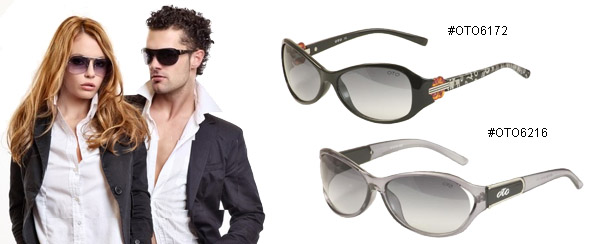Photochromic sunglasses? What might that be? Do they ring a bell to you? If not, you shall really brush up on your knowledge about sunglasses in order to catch up with the latest fashion. Photochromic sunglasses, also known as transitional sunglasses, have been enjoying a skyrocketing popularity among glasses wearers for so long that you might rack your brain wondering how they do the trick to endear themselves to so many people. This article serves an explanatory note of photochromic sunglasses to highlight their merits and point out their shortcomings, just for your information.

What are photochromic sunglasses?
Photochromic sunglasses are sunglasses having lenses that darken on exposure to UV radiation. Once the UV is removed (for example by walking indoors), the lenses will gradually return to their clear or transparent state. To put it simply, on a bright and sunny day, these transitional lenses adjust automatically to the intensity of light and hence, control the amount of light that falls on your eyes. UV rays are blocked 100% just like it would with a pair of sunglasses, which means you do not have to carry a pair of extra sunglasses when moving outdoors.


What are the merits of photochromic sunglasses?
Photochromic sunglasses are a veritable boon for those stuck with corrective eyewear. With the aid of photochromic sunglasses, they can save their budget to enjoy the same pleasure of stylish cool image and all-round protection imparted by sunglasses, instead of buying prescription sunglasses in addition to transparent corrective glasses. Those without 20/20 vision stand to benefit in plenty from these transitional sunglasses both financially and physically. This is really reassuring for people with vision loss, for they don’t have to cover their corrective eyewear with those bulky and cumbersome sunglasses, which for sure pose an extra burden to wearers and also mar the facial beauty of yours. Their lenses can be made of glass, polycarbonate or another plastic. So the price of photochromic sunglasses is not too intimidating for you to set your hands on one pair.Since they adjust automatically to improve contrast and protect your eyes against glare, they are great for reducing eye fatigue and strain. Besides, the time required for them to get dark according to the intensity of light and to get clear does not exceed 30 seconds. Furthermore, photochromic lenses come in all kinds of materials and designs and gray and brown tints making them cool and chic as well.
What are the demerit of photochromic sunglasses?
Many photochromic lenses do not work through car glass, so they aren’t an effective option for the changing light conditions present while driving. If you need photochromic lenses for driving, shop for a pair that is designed for driving use. If you’re looking for a pair of glasses for more reliable, steady light conditions, as in lying out on the beach, you’d be better off with a pair of dark lenses as opposed to a photochromic pair.
Such being the case, the promising merits greatly outweigh the demerit, ensuring that photochromic sunglasses are a dependable and trustworthy alternative to the combination of sunglasses and prescription eyeglasses. Whenever and wherever, as long as you have photochromic sunglasses on your side, you are in a position to enjoy a safe and sound vision to the utmost. Firmoo happens to have in store a wide range of great quality and low-priced photochromic sunglasses. The cheap glasses are close at hand, so why don’t you give it a shot? The return and refund policy is quite convincing and alluring. Go ahead and have a go at it!
Firmoo Answers:
- Which kind of sunglasses are better for driving, Photochromic sunglasses or polarized sunglasses?
- How to clean my prescription photochromic sunglasses?
- Which brand offers the best photochromic sunglasses?
- How to care for my photochromic sunglasses?
- How do you think about oakley photochromic sunglasses?
- Should children wear clip-on sunglasses or Photochromic sunglasses?
- Can photochromic sunglasses be harmful to your eyes?
- Will the photochromic lenses in sunglasses become completely clear indoors?









